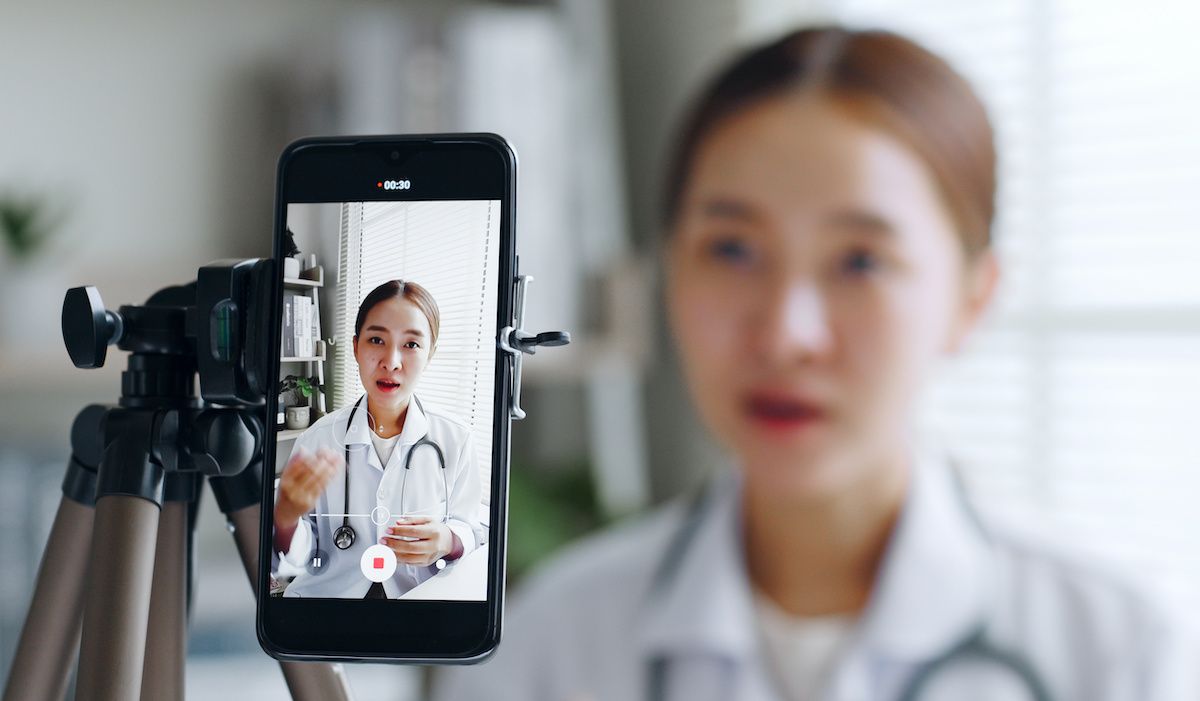- Center on Health Equity & Access
- Clinical
- Health Care Cost
- Health Care Delivery
- Insurance
- Policy
- Technology
- Value-Based Care
How Medical Media Is Shaping Gastroenterology and Hepatology
Medical media is transforming pediatric gastroenterology and hepatology by boosting networking, research visibility, and education, but best practices are essential for clinical use.
Medical media for gastroenterology and hepatology can significantly enhance clinical practice, education efforts, and patient engagement with their care, according to a review, which highlights the benefits of integrating more medical media into care settings.1
The review, published in Current Gastroenterology Reports, sought to explore the role of medical media focused on gastroenterology and hepatology in the patient-provider relationship and offered practical guidance for providers on implementing these tools into their daily practice.
Pediatric gastroenterologists and hepatologists can strategically harness medical media by stepping into three key roles—consumer, contributor, and creator—allowing them to drive professional growth while shaping the future of their field. | Image credit: Nattakorn - stock.adobe.com

“By understanding the roles of contributor, creator, and consumer and leveraging the right platforms and content types, pediatric gastroenterologists and hepatologists can effectively utilize medical media to advance their field and provide better care,” the authors wrote.
Medical media, including platforms such as medical journals, websites, mobile apps, social media, and podcasts, have become incredibly popular in recent years, particularly during the COVID-19 pandemic. Data from the NIH show that between 69.9% of US adults (95% CI, 67.8%-70.1%) use an internet-first approach when investigating a health issue.2 A 2024 Healthline State of Consumer Health survey found that 52% of Americans who tried a new health tactic in the last year said they found the idea through social media.3 Additionally, Americans who have gotten a health screening in the last year were more likely to try social media health trends and new health approaches in general.
Medical media platforms have become useful for advancing medical careers by promoting academic work, increasing the visibility of research, and fostering professional networking. The authors argued that incorporating medical media into education for pediatric gastroenterology and hepatology trainees enhances knowledge acquisition and supports the rapid dissemination of current research findings. Additionally, these platforms play a key role in building a professional brand and establishing a reputation as a thought leader in specific areas of medicine.
Pediatric gastroenterologists and hepatologists can engage with medical media in 3 main roles: consumer, contributor, and creator. The authors said that understanding these roles will help them strategically leverage medical media to enhance their professional development. The initial step in creating medical media content involves developing material that aligns with one's expertise and passion while ensuring authenticity and authority.
However, the authors noted that selecting the appropriate media format and platform is crucial to enhancing reach and impact when creating medical content. To distinguish themselves amidst the extensive content available, creators must enhance engagement by providing unique perspectives or specialized expertise.
As consumers, gastroenterology and hepatology providers should stay informed by following relevant journals and professional societies to keep up with advancements in the field.
As contributors, providers should develop multimedia educational resources, including expert interviews and patient materials, to enhance learning and engagement. Additionally, engaging with both patients and trainees through medical media can improve education and involvement in care. Lastly, all shared content must be evidence based, cross-referencing with current research, and aligned with clinical guidelines.
The review made 6 main recommendations for health care providers looking to create content and implement medical media into everyday clinical practice:
- Follow credible creators who are active researchers, medical journals, or health care providers
- Actively participate in online discussions to build professional networks and promote research work
- Combat misinformation by providing accurate, evidence-based information, particularly regarding conditions like inflammatory bowel disease and liver diseases where misinformation is common
- Invest in the right equipment and editing tools for effective content creation
- Managing your time effectively to avoid overconsumption, enhance productivity, and prevent burnout from content creation and combating misinformation
- Foster collaborative engagement with other contributors
Additionally, the review stressed that maintaining professionalism and being aware of intellectual property considerations are essential when engaging with medical media. Awareness of intellectual property, monetization options, and copyright is crucial for maintaining professionalism while protecting and potentially profiting from content. Ensuring that content aligns with the values and legal standards of one's employer is also vital.
The authors concluded, “By utilizing these tools and understanding the intricacies of various platforms, practitioners can enhance their visibility, foster professional networks, and ultimately contribute to the advancement of pediatric gastroenterology and hepatology. Integrating medical media thoughtfully into their practices can lead to better educational outcomes and improved patient care.”
References
1. Medical media in pediatric gastroenterology and hepatology: strategies for effective use by consumers, contributors, and creators. Curr Gastroenterol Rep. 2024;26:349-359. doi:10.1007/s11894-024-00947-3
2. Rutten LJF, Blake KD, Greenberg-Worisek A, Allen SV, Mosser RP, Hesse BW. Online health information seeking among US adults: measuring progress toward a healthy people 2020 objective. Public Health Rep. 2019;134(6):617-625. doi:10.1177/0033354919874074
3. State of Consumer Health. Healthline Editorial Team. October 8, 2024. Accessed February 17, 2025. https://www.healthline.com/health/consumer-health-survey#1
Corticosteroid Premedication for Infliximab Remains Unnecessarily Common
July 8th 2025Although use of corticosteroid premedication prior to infliximab infusions is declining, it remains unnecessarily high despite limited benefit and the risk of serious adverse events from corticosteroids.
Read More
